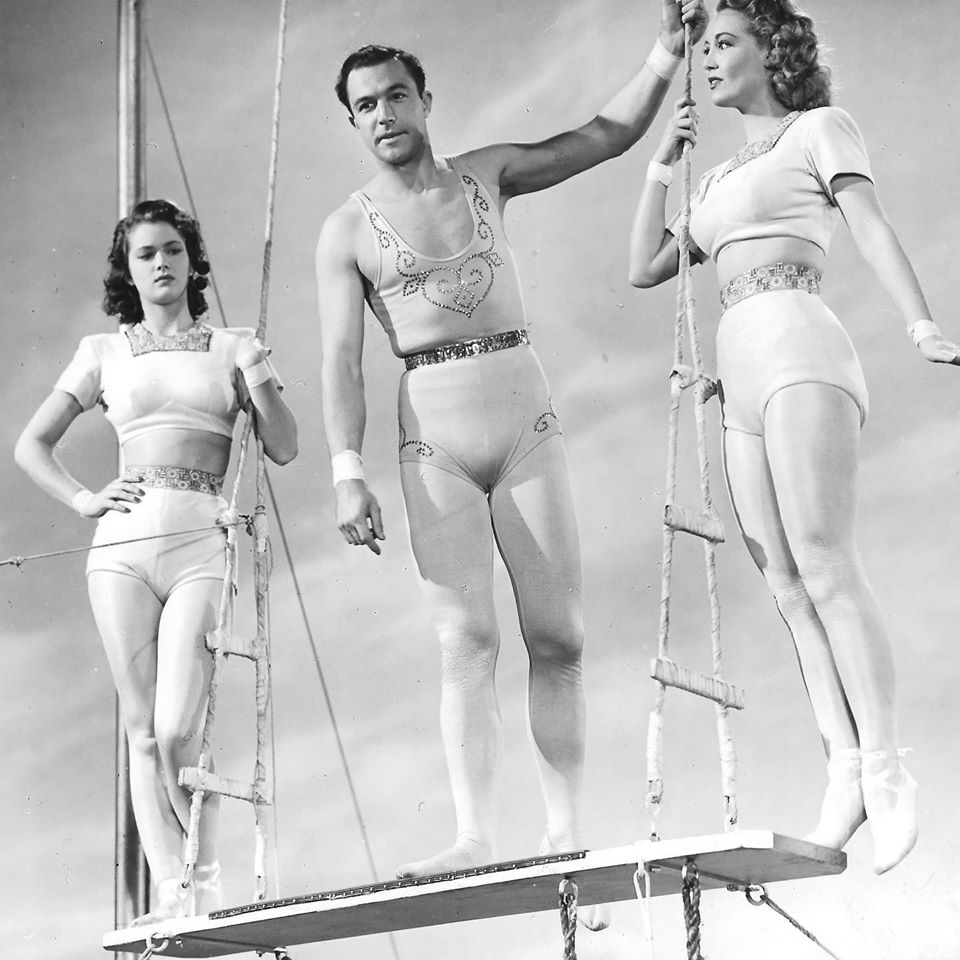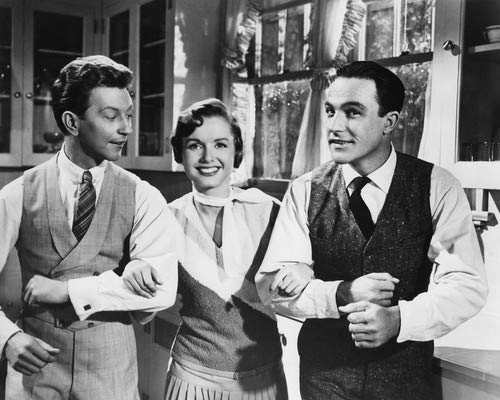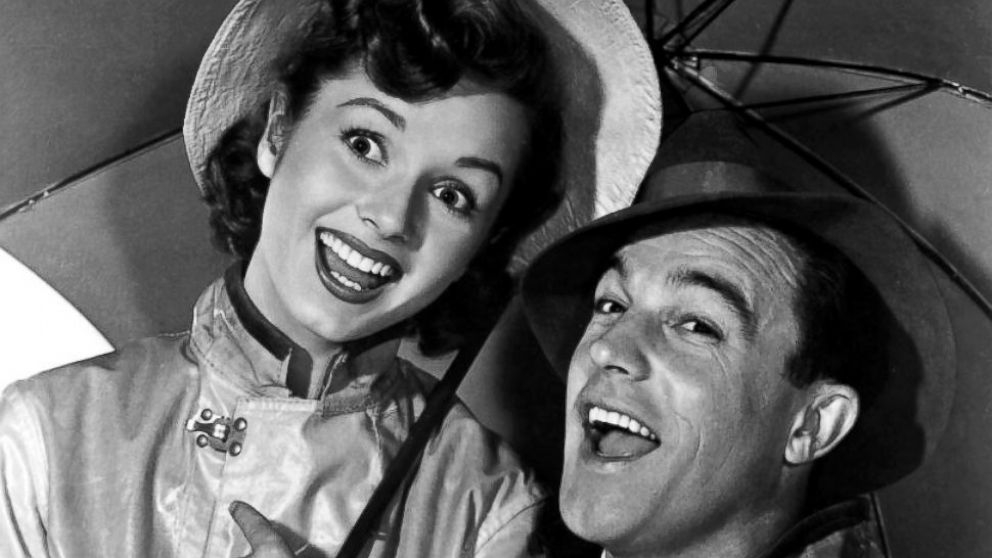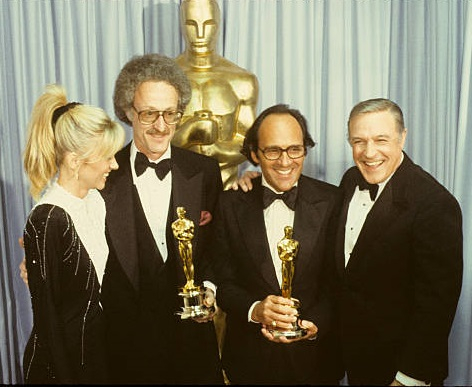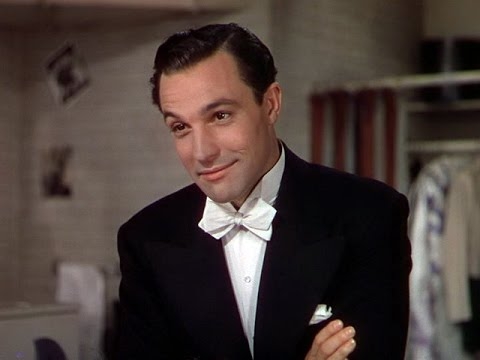February 3, 1996
Gene Kelly, Dancer of Vigor and Grace, Dies
By ALBIN KREBS
Gene Kelly, the dancer, actor, director and choreographer who brought a vigorous athleticism, casual grace and an earthy masculinity to the high romance of lavish Hollywood musicals, died yesterday at his home in Beverly Hills, Calif. He was 83.
Mr. Kelly's highly developed sense of the possibilities of dance on film invigorated classic musicals like "Anchors Aweigh," "On the Town," "An American in Paris" and "Singin' in the Rain." A gifted dancer with his own vibrant style, he also flourished as an innovative choreographer and director in the 1940's and 50's, the heyday of the big, splashy Hollywood musical. Mr. Kelly, who could also put over a song in a high, thin voice, brought to his films an inventive technique that enabled him to create unusual and imaginative dance routines that usually arose directly out of a plot or script situation. Thus millions of moviegoers remember Mr. Kelly dancing merrily in a downpour in "Singin' in the Rain," hoofing with an animated mouse, Jerry, in "Anchors Aweigh," hopping over garbage cans in a sequence in "It's Always Fair Weather" and, with the aid of special process photography, dancing with himself in the "alter ego" number from "Cover Girl." In addition to his movies, which included "The Pirate," "Brigadoon" and the drama "Inherit the Wind," Mr. Kelly was also a star on Broadway, where he created the title role of the heel as hero in "Pal Joey," choreographed "Best Foot Forward" and directed Rodgers and Hammerstein's "Flower Drum Song." "I don't really know why I clicked," Mr. Kelly said many years later. "I didn't want to be a dancer. I just did it to work my way through college. But I was always an athlete and gymnast, so it came naturally. "In the 1930's, when I started, Martha Graham was the only dancer doing anything modern, but she did it all to classical music. I couldn't see myself doing 'Swan Lake' every night, and I wanted to develop a truly American style. The only dancer in the movies at that time with any success was Fred Astaire, but he did very small, elegant steps in a top hat, white tie and tails. I was too big physically for that kind of dancing, and I looked better in a sweatshirt and loafers anyway. It wasn't elegant, but it was me." Eugene Curran Kelly was born on Aug. 23, 1912, in Pittsburgh. His mother insisted that all five of the Kelly children take music and dance lessons, and in high school Mr. Kelly continued dance lessons while also playing on the football and hockey teams. His education at Pennsylvania State College was interrupted by the Depression, and his first job was teaching gymnastics at a summer camp for boys. He was later able to major in economics at the University of Pittsburgh and received a degree in 1933, but jobs were scarce and he went to work for a dancing school partly owned by his mother. Two years later, the school was renamed the Gene Kelly Studio of the Dance and soon a successful branch was opened in Johnstown. Meanwhile, Mr. Kelly directed plays produced locally and formed a dance act with his brother Fred, with whom he performed in a theater for children at the Chicago World's Fair in 1934. In the mid-1930's Mr. Kelly also redirected vaudeville acts that passed through Pittsburgh. Mr. Kelly did not decide to try his luck in New York until 1938, when he was 27 years old. His first job was as a Broadway chorus boy in 1938's "Leave It to Me," dancing while Mary Martin sang "My Heart Belongs to Daddy," but the next year he won critical acclaim for his featured role as the comic hoofer in William Saroyan's play "The Time of Your Life." That success led to his being cast in "Pal Joey," the 1940 Rodgers and Hart musical, in which he played the unscrupulous central character so convincingly that John Martin, a critic for The New York Times, said, "He is not only glib-footed, but he has a feeling for comment and content that give his dancing personal distinction and raise it several notches as a dancing art." Mr. Kelly's ability to meld singing and dancing with characterization and the demands of the play's plot attracted so much notice that David O. Selznick signed him to an exclusive Hollywood contract. At the time, Mr. Kelly was appearing in "Pal Joey" at night and by day choreographing the Broadway musical hit "Best Foot Forward." In 1941, he left for Hollywood, where he was to bring a new vitality to dance on film and help change the whole concept of movie musicals.
Mr. Selznick had no musicals planned, however, and lent Mr. Kelly to Metro-Goldwyn-Mayer, the studio most noted for lavish musicals. His first film, in 1942, was "For Me and My Gal," in which he starred as a small-time vaudeville hoofer opposite Judy Garland. It was a huge success, but MGM, after buying the new star's contract from Mr. Selznick, relegated him to relatively minor parts in "DuBarry Was a Lady," "Thousands Cheer," and the wartime drama "Cross of Lorraine." In "Cover Girl," co-starring with Rita Hayworth in 1944 on loan to Columbia Pictures, Mr. Kelly's career took off. With the aid of Stanley Donen, with whom he was to direct and choreograph several movies in years to follow, Mr. Kelly developed the celebrated "alter ego" solo dance with his ectoplasmic self, the character's conscience. Photographed separately, then combined on a single strip of film, the two Kelly images seemed to pursue each other up and down flights of steps, to threaten each other and leap over each other's heads. "For once, a dance on the screen is not merely a specialty but actually develops character and advances plot," wrote a New York Times critic. Mr. Kelly's choreographic inventiveness was credited with the success of the trail-blazing live-dance-with-animation sequence in "Anchors Aweigh" in 1945. He had a hard time persuading MGM officials that they should spend $100,000 and two months shooting an eight-minute number, in which he would dance with Jerry the mouse from the "Tom and Jerry" cartoon series. Simple live action and animation went back to silent-film days, but Mr. Kelly's idea involved color and intricate dance steps for himself and the cartoon characters, and required complex laboratory and processing work. For the charming sequence, Mr. Kelly first danced against a plain blue background, then animators filmed the mouse song-and-dance portion. What audiences saw was a composite picture made from the two separate films, with man and mouse happily dancing and singing. The procedure is common now, even in television commercials, but in the mid-1940's it was hailed as a cinematic breakthrough.
After the war, Mr. Kelly's first big picture was "The Pirate," a 1948 spoof of swashbuckling adventures in which he again starred with Judy Garland, with whom he sang the rousing "Be a Clown." James Agee, the critic, found Mr. Kelly's performance "very ambitious, painfully misguided, by John Barrymore out of the elder Douglas Fairbanks." In "The Three Musketeers" (1948), Mr. Kelly did not dance, but as D'Artagnan he used his balletic skills to burlesque some fencing scenes. One of Mr. Kelly's most memorable dance performances came in the seven-minute "Slaughter on 10th Avenue" ballet sequence in "Words and Music," a 1948 movie that was only subliminally based on the lives of Richard Rodgers and Lorenz Hart. Most critics agreed that about the only thing to cheer about the film was the Rodgers ballet, in which Mr. Kelly was partnered with Vera-Ellen. In 1949, Mr. Kelly made two films with Frank Sinatra, "Take Me Out to the Ball Game" and one of his all-time hits, "On the Town," which he directed and choreographed with Mr. Donen and filmed mostly on location in New York City. Mr. Kelly, whose co-stars included Betty Garrett, Ann Miller and Vera-Ellen, turned the film into an exhilarating, joyful experience that began with the brassy "New York, New York (It's a Helluva Town)" opening number and never let up in its mood of pervasive effervescence. "This film was a milestone," he said in 1977. "It was the first musical to be shot on location. We took the musical off the sound stage and showed that it could be realistic. But some of Mr. Kelly's most popular and artistically successful films were yet to come. In 1951, "An American in Paris," in which he received sole star billing, won eight Academy Awards, including best picture of the year, and a special Oscar for Mr. Kelly for his contributions to screen choreography. An integral part of the film was a 17-minute ballet conceived by Mr. Kelly and the director, Vincente Minnelli, as a means of showing the impact Paris has on the hero. Costumes, sets and dance movements for the ballet were borrowed from the styles of such artists as Dufy, Renoir, Utrillo, Rousseau, van Gogh and Toulouse-Lautrec and the music danced to by Mr. Kelly and Leslie Caron was George Gershwin's "American in Paris" suite."Singin' in the Rain," released in 1952, was one of the last of the big MGM musicals and it was, said Vincent Canby, film critic of The New York Times, in a 1975 appraisal, "a movie masterpiece." Again teaming with Mr. Donen, Mr. Kelly helped to direct and choreograph the affectionate spoof of the start of the talkies era in movies. The movie made splendid use of such Arthur Freed-Nacio Herb Brown songs as "You Were Meant for Me," "You Are My Lucky Star" and "All I Do Is Dream of You."
In the title number, a love-struck Mr. Kelly, with an umbrella as his principal prop, sang and splashed ecstatically and obliviously through a downpour on an all-but-deserted street. The sequence is widely regarded as a classic piece of cinematic choreography.
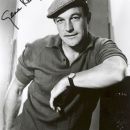
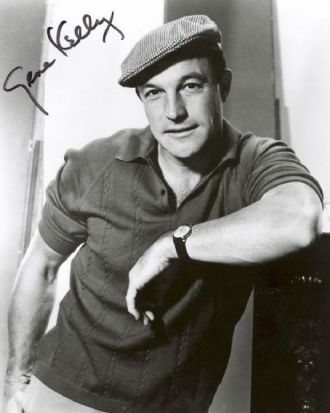
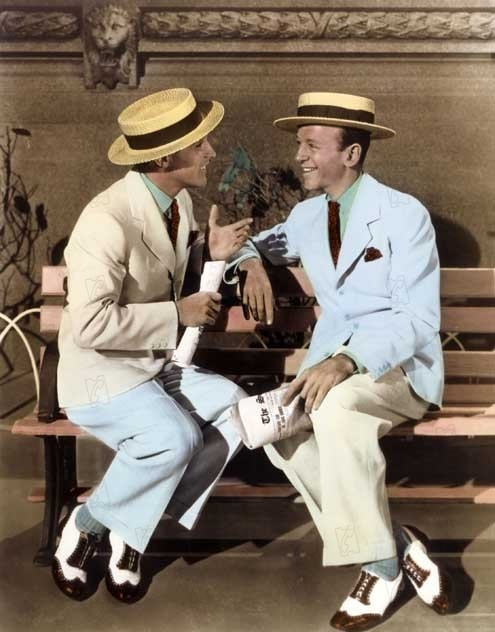
 Amanda S. Stevenson
Amanda S. Stevenson 